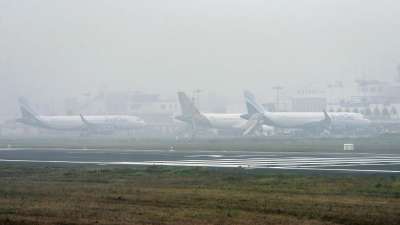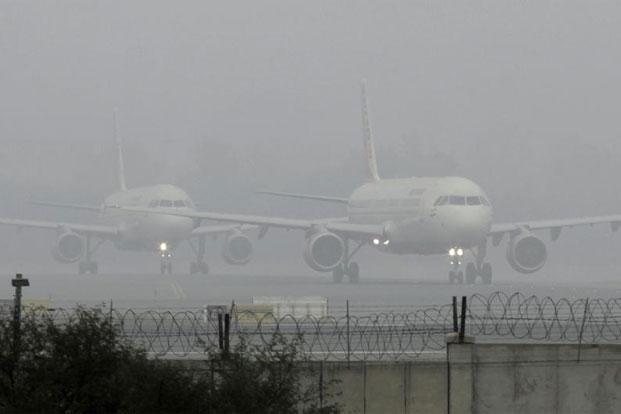As the most severe fog of the season blanketed the country’s northern regions, Delhi’s Indira Gandhi International (IGI) airport experienced the ripple effect, causing the delay of nearly 600 flights and the cancellation of 76 others. This disruption extended its impact to numerous airports across the country.
Thick fog blankets Delhi
At Delhi airport, visibility fluctuated between zero and fifty meters for a continuous 10-hour period, from 00:30 to 11:30 hours, marking the most severe fog episode of the season.
The India Meteorological Department’s senior scientist, R.K. Jenamani, said such intense fog occurred last December 2019. This dense fog phenomenon extended across northern India, affecting cities such as Amritsar, Pathankot, Jammu, Chandigarh, Lucknow, Allahabad, Varanasi, and Patna.

Consequently, the impact was felt in the aviation sector, with 245 inbound flights delayed and 14 others cancelled between 5 AM and 7:30 PM on Sunday. Additionally, 355 outbound flights experienced delays, while 62 were cancelled during the same period.
The situation at Indira Gandhi International Airport intensified as there were no departures until 11 AM due to visibility falling below the critical threshold of 125 meters.
Adding to the challenges, Delhi relies on only two CAT IIIB-compliant runways designed explicitly for precision instrument landing. The closure of one runway for re-carpeting worsened the impact of the pervasive fog.
Sources from IGI Airport revealed that ten flights were diverted to Jaipur because the airlines had not scheduled crews trained for low-visibility operations.

As departures remained at a standstill, parking bays became congested with outbound aircraft. Consequently, despite receiving clearance to land, some flights faced extended waits of over two hours to be assigned a parking bay, leading to delays in passengers’ deboarding. Instances included an Air India flight from Frankfurt to Delhi and a Virgin Atlantic flight from London.
The chaos unfolding at Delhi Airport, known for hosting the highest number of passengers in the country, had a domino effect on most airports nationwide.
Jammu bore the brunt of the disruption, with all flights affected, leading to eight delays and seven cancellations.

Chennai, too, felt the repercussions, witnessing the cancellation of 47 flights due to the cascading impact on various airlines’ route networks. An official from the Airports Authority of India reported that these cancellations included inbound and outbound flights from multiple locations across the country, such as Mumbai, Pune, Kolkata, Cochin, and Coimbatore.
The Bhogi Effect in Chennai?
In the early morning hours, flights in Chennai were impacted by low visibility from 5 AM to 8 AM, attributed to smoke emanating from bonfires lit for Bhogi, a festival on the eve of Pongal. This led to diverting “five to six flights” to Hyderabad, as an Airports Authority of India (AAI) official quoted.

Kolkata airport experienced a total disruption of 164 flights until 8 PM, with 45 flights affected by poor visibility within the city. The remaining flights encountered delays due to disruptions at other airports, with 29 cancellations.
According to the India Meteorological Department’s (IMD) website, Delhi typically witnesses its highest number of fog days in January, averaging around 21.6 affected days, compared to 19.2 days in December and 12.3 days in November.
Bengaluru Suffers from Delayed Flights
On Sunday, bad weather conditions wreaked havoc at Bengaluru’s Kempegowda International Airport, causing delays for more than 50 domestic flights.
Reports indicated that a handful of flights bound for destinations such as Goa, Delhi, Varanasi, Mumbai, Prayagraj, and Vijayawada had to be cancelled due to the foggy weather. Notable carriers such as Indigo, Akasa Air, and Air India faced delays, contributing to a chaotic situation at Bengaluru Airport’s Terminal 1.
The impact of extreme weather conditions extended beyond the aviation sector, with trains experiencing delays across various parts of the country. The prevalent low visibility, particularly in North India, led to disruptions and prolonged stops. The ripple effects of these delays and halts are expected to persist for several days.












Comments 1